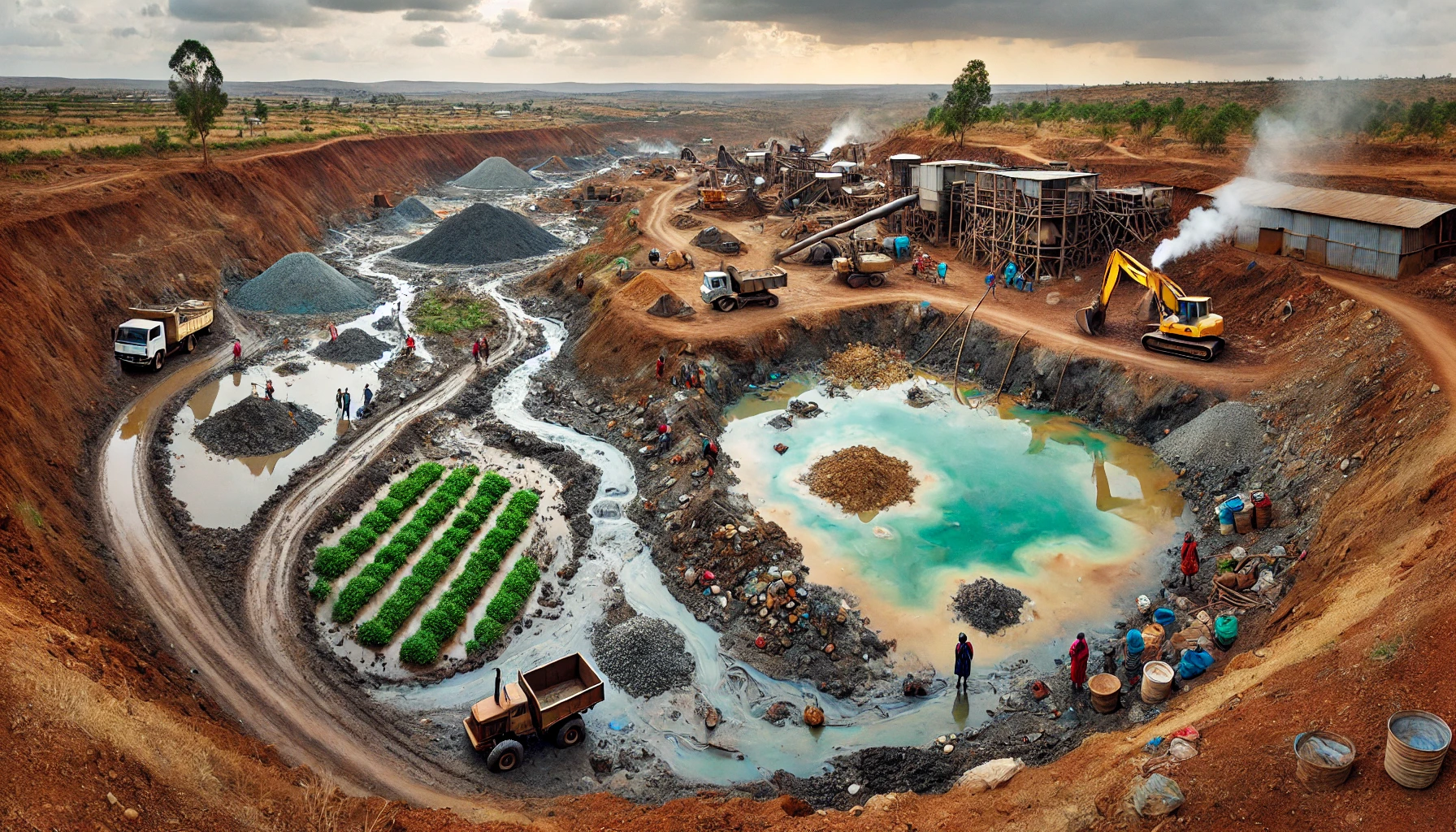IAEA, Anglo American Launch Global Drive to Reclaim Saline Soils, Fight Drought
Globally, around 10% of irrigated land and a similar portion of rain-fed farmland suffer from salinization, which continues to spread at an alarming rate.

This week, in observance of the World Day to Combat Desertification and Drought, global attention turned toward the pressing need to restore the world’s degraded land. Among the leading efforts is a groundbreaking initiative led by the International Atomic Energy Agency (IAEA), in collaboration with Anglo American Crop Nutrients, targeting the restoration of salt-affected soils—a major driver of desertification.
The partnership has launched a new Coordinated Research Project (CRP) that explores the use of mineral-based fertilizers, including the ancient nutrient-rich mineral polyhalite, to rehabilitate saline soils and turn them into productive farmland. This pioneering public-private partnership aims to combat one of the most urgent challenges to global food security: soil salinization.
The Salinity Crisis: A Threat to Food Security
Soil salinization occurs when water-soluble salts accumulate in soil to levels that inhibit plant growth. The salinity disrupts the plant’s ability to absorb water and essential nutrients, leading to reduced crop yields or even total failure.
The causes are numerous and often interconnected:
-
Irrigation with salt-laden water
-
Dry, arid climates exacerbated by climate change
-
Rising sea levels infiltrating farmland
-
Overuse of nitrogen-based fertilizers
Globally, around 10% of irrigated land and a similar portion of rain-fed farmland suffer from salinization, which continues to spread at an alarming rate. The UN Food and Agriculture Organization (FAO) warns that if left unchecked, 50% of all arable land will be salinized by 2050—a dire forecast that would devastate food production worldwide.
Science-Based Solutions: A New Role for Polyhalite
The IAEA and Anglo American Crop Nutrients’ new CRP explores the benefits of polyhalite, a naturally occurring mineral formed from ancient seawater 260 million years ago. Rich in essential nutrients—potassium, sulphur, magnesium, and calcium—polyhalite has unique properties that enhance soil health without increasing salinity.
Here’s how polyhalite works:
-
It provides essential cations (positively charged ions) like calcium and magnesium, which displace harmful sodium ions from soil particles.
-
Unlike many conventional fertilizers, it contains low chloride content, making it less likely to exacerbate soil salinity.
-
It improves soil structure, enabling better water infiltration, root growth, and microbial activity.
This mineral is especially effective against sodic soils, where excess sodium alters the soil structure, turning it hard when dry and restricting water movement. By restoring soil porosity and balance, polyhalite helps transform barren land into fertile ground.
Global Research and Capacity Building
The IAEA is also investing in capacity building through isotopic techniques that help improve fertilizer and water use efficiency. By using nitrogen-15, a stable isotope, researchers are able to track nitrogen uptake in plants, identifying the optimal fertilizer application rate and reducing waste that contributes to salinity.
In Mali, this method was applied successfully with 500 smallholder farmers and 50 trained scientists. Results showed improved nitrogen fixation, enhanced carbon storage, and better resilience of crops in salt-affected environments.
A Legacy of Impact: From Pakistan to the Middle East
The IAEA’s involvement in saline soil reclamation dates back decades. In 1978, the agency partnered with Pakistan to develop climate-smart farming practices that converted salt-affected soils into highly productive agricultural land.
Today, that legacy continues through collaboration with Pakistan’s Nuclear Institute for Agriculture and Biology (NIAB). With IAEA support, NIAB has developed salt-tolerant crop varieties, and improved water and soil nutrient management. The institute has since become a hub for training scientists from other nations facing similar soil degradation.
The IAEA’s support extends across the Middle East:
-
In Jordan, Lebanon, and Syria, scientists are developing and testing salt-resistant crops.
-
In Lebanon, millet has been successfully grown under saline conditions.
-
In Jordan and Kuwait, barley and safflower are thriving.
-
Syria has cultivated okra in degraded soil.
-
In the United Arab Emirates, quinoa fields are flourishing despite high soil salinity.
These achievements are documented in an open-access IAEA publication, serving as a practical guide for countries combatting land degradation.
A Sustainable Path Forward
“As the world faces increasing pressure to feed a growing population, restoring degraded land is more urgent than ever,” said Mohammad Zaman, Head of the Soil and Water Management and Crop Nutrition Section of the Joint FAO/IAEA Centre. “The IAEA’s work shows that with the right tools—science, collaboration, and innovation—we can turn salty, barren soils into fertile ground for the future.”
The IAEA’s new CRP is not just a technical collaboration but a call to action. It reflects the increasing role of science, public-private partnerships, and global solidarity in addressing a problem that threatens ecosystems, economies, and human well-being alike.
With continued support and implementation, this initiative may provide one of the world’s most promising responses to the dual challenges of climate change and food insecurity.










